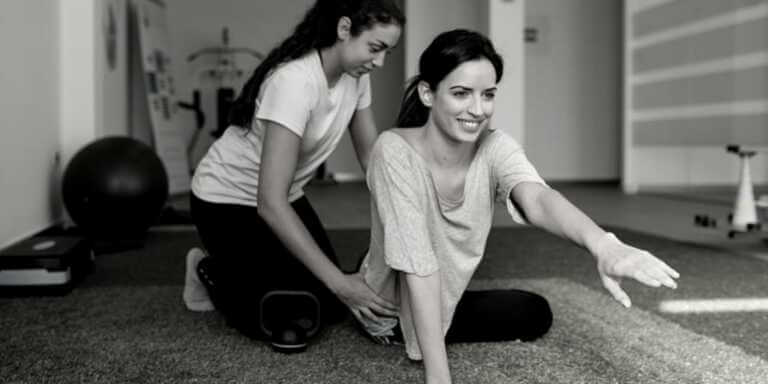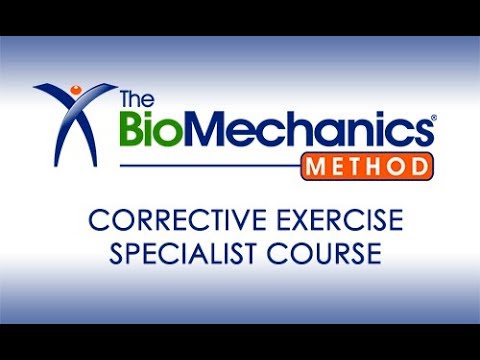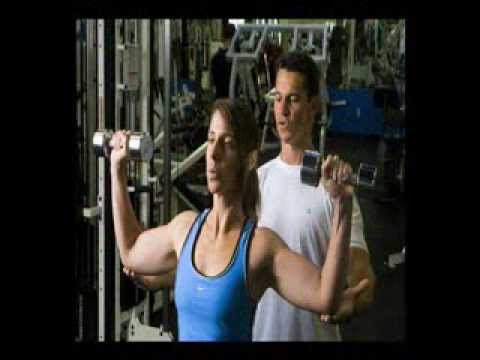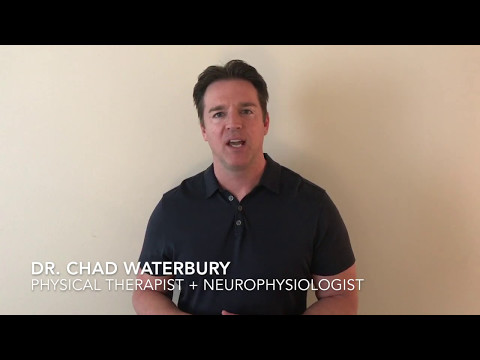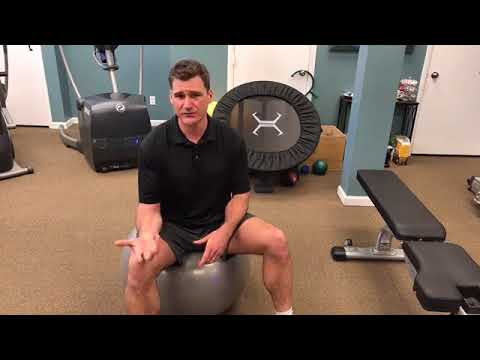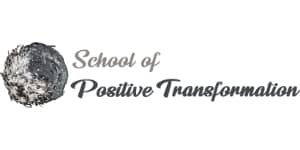Some of the links below are affiliate links, which means I may earn a commission, at no extra cost to you.
3 Best Corrective Exercise Specialist Certifications
Best Corrective Exercise Specialist Certification

Course Provider: Biomechanics Method
Program: Corrective Exercise Specialist
Price: $749 (Get 30% OFF with my code below)
Payment Plans: n/a
Exclusive 30% Off Coupon Code:
KishLife30
Here’s 2 videos by the creator, Justin Price, to introduce this in depth specialist course:
Sample Lesson: Part 1 of 5 in the ‘Causes and Cures of Lower Back Pain’ series
Exclusive 30% Off Coupon Code:
KishLife30
Biomechanics Method Review
The Fundamentals of Structural Assessment (Module 1)
This learning module teaches a step-by-step process for conducting musculoskeletal assessments so you can identify common imbalances that can cause muscle dysfunction, joint discomfort and movement limitations.
You will learn verbal, visual, and hands-on techniques for assessing the feet and ankles, knees, lumbo-pelvic hip girdle, thoracic spine and shoulder girdle, and the neck and head. You will also learn how musculoskeletal imbalances in one area of the body can cause problems in other areas.
Understanding Muscles and Movement (Module 2)
This learning module explains in easy-to-understand terms how the whole body moves together as an integrated series of muscles, tendons, bones, ligaments, and fascia; information that is essential for understanding the root causes of musculoskeletal imbalances. It will teach you about major muscle groups in detail, as well as specific muscle origins, insertions, and functions.
Most importantly, you will discover the unique approach of The BioMechanics Method in regard to understanding how gravity and ground reaction forces change the way the body moves — knowledge that is imperative for designing effective corrective exercise programs.
The Fundamentals of Corrective Exercise (Module 3)
This learning module builds upon the knowledge and skills learned in Modules 1 and 2, and explains the most effective types of exercises for eliminating lower back, hip, shoulder, knee, neck, foot, and ankle dysfunction caused by common musculoskeletal imbalances.
You will learn about self-myofascial release techniques that will enable you to alleviate restrictions in muscles and fascia, stretching exercises to help increase a client’s mobility and range of movement, and strengthening exercises to help people begin to move correctly and without limitations.
You will also learn valuable strategies for regressing exercises when necessary, and then progressing exercises as a client’s abilities improve. Specific contraindications for each exercise type are also included to ensure safety and effectiveness.
The Complete Corrective Exercise Library (Module 4)
This learning module contains descriptions and demonstrations of almost 200 of the most effective corrective exercises for addressing musculoskeletal imbalances (including progressions and regressions).
The fundamental principles of each corrective exercise category are highlighted and key teaching tips for every exercise are provided. This comprehensive collection of techniques serves as an exercise guide to help you to create programs that are most appropriate for a client’s needs.
Corrective Exercise Program Design (Module 5)
This learning module guides you through the corrective exercise program design process from start to finish, teaching you how to develop and use effective communication strategies when working with clients that have corrective exercise needs. Comprehensive, real-life case studies using actual clients are also included that demonstrate the complete The BioMechanics Method process.
In addition to tying together the information from Modules 1-4, this fifth and final module of TBMM-CES course focuses on client communication skills, networking, and referral strategies so you can apply your skills within your scope of practice in the real world.
None
- American Council on Exercise (ACE) – 8.0 CECs
- National Exercise Trainers Association (NETA) – 80.0 CECs
- American College of Sports Medicine (ACSM) – 80.0 CECs
- National Strength and Conditioning Association (NSCA) – 2.0 CEUs (Cat. C)
- REPs UAE – 40 CPDs (total for all course modules)
- AUSActive – 37 CECs (total for all course modules)
- CIMSPA – 10 CPDs
- Canadian Society for Exercise Physiology (CSEP) – 15 CPDs
- International Sports Sciences Association (ISSA) – 20 CEUs
- National Pilates Certification Program (NPCP) – 12 CECs
- Board of Certification (BOC) – 32.0 Category A CEUs
- Virginia Board of Physical Therapy (VBOPT) – 32.0 Type 1
- Athletics and Fitness Association of America (AFAA) – 15 CEUs
- National Academy of Sports Medicine (NASM) – 1.9 CEUs
The course is also eligible for continuing education credits from IFPA, NESTA, NFPT, WITS, YMCA, and many other certifying organizations upon petition. Most physical therapy boards will reciprocate approval for continuing education. Please check with your state. The National Strength and Conditioning Association approved 2.0 CEU(s) in category C for certified individuals who successfully complete this course.
My Biomechanics Method Review
Below are my opinions based on going through the course.
For more context, I have 15+ years of experience in the fitness industry. I’ve taken numerous courses online and in person, watched 100’s (if not 1000’s) of videos on YouTube related to the fitness industry, and read numerous books.
In other words, I have a decent amount of learning experience to compare this course to in terms of quality.
Who do I think this course is best suited for?
Exclusive 30% Off Coupon Code:
KishLife30
#2 Corrective Exercise Specialist Certification

Course Provider: International Sports Science Association
Program: Corrective Exercise Specialist
Price: $419
Payment Plans: $34 x 12
International Sports Science Association Review
Section One: Corrective Exercise Science
- Skeletal System
- Muscle and Fascia
- The Nervous System
- Joint Actions
- Movement
Section Two: Corrective Exercise Practice
- Preparing for the Client
- Create a Just Right Challenge
- Perform a Single-Joint Movement Analysis
- Perform an Upper Body Multi-Joint Movement Analysis
- Perform a Lower Body Multi-Joint Movement Analysis
- Restore Structural Alignment and Stability
- Restore Mobility through Stability
- Soft Tissue Assessments and Correctives Request Information
Download a free sample of Chapter 1:
European Register of Exercise Professionals – The European Register of Exercise Professionals (ERP) is a certification body in Europe. It was established in 2007. The main purpose of the European Register of Exercise Professionals is to provide a quality-assured, reliable and efficient service for individuals and organizations that wish to deliver exercise-related services. The European Register of Exercise Professionals is an independent body and is not affiliated with any governmental or non-governmental organizations.
ISSA – 20 CEUs
None
#3 Corrective Exercise Specialist Certification

Course Provider: National Academy of Sports Medicine
Program: Corrective Exercise Specialist
Price:
Self-Study: $449
Premium Self-Study: $599
Payment Plans:
Self-Study: $199 down, then $15 x 17
Premium Self-Study: $199 down, then $24 x 17
National Academy of Sports Medicine Review
Section 1: Introduction to Corrective Exercise Training
Chapter 1: Rationale for Corrective Exercise
The student will understand the rationale and importance of delivering corrective exercise training to clients.
Chapter 2: Human Movement Science and Corrective Exercise
Discover the relationship between functional anatomy, the human movement system, and optimal movement and how this applies to the overall corrective exercise strategy.
2: Corrective Exercise Techniques
Chapter 3: Inhibitory Techniques
Choose and implement the appropriate inhibitory strategies based on the current evidence gained from the assessments you’ve conducted.
Chapter 4: Lengthening Techniques
Learn the rationale and proper implementation of various flexibility modalities.
Chapter 5: Activation Techniques
Understand the guidelines, precautions, and contraindications for implementing isolated strengthening exercises.
Chapter 6: Integration Techniques
Understand the importance of integrated dynamic movement and how to progress these movements to reach your client’s performance goals.
Section 3: Assessment
Chapter 7: Client Intake and Assessment
Learn best practices for client intake and assessment to create the most targeted training program that addresses their specific needs.
Chapter 8: Static Assessments
Unlock the vital first step in the corrective exercise assessment process, which gives insight into the overall body alignment of the client.
Chapter 9: Movement Assessments
Movement assessments are the cornerstone of the assessment process. Work through the assessment flowchart, selecting the most relevant and targeted assessments.
Chapter 10: Mobility Assessments
Gain an understanding of how to further refine the assessment process with targeted mobility assessments.
Section 4: Programming Strategies
Chapter 11: Corrective Strategies for the Foot and Ankle
Human movement is a complex balance of sensory stimulation, neuromuscular control, and biomechanical stabilization. At the root of human movement is the relationship between the foot and ankle. This chapter will review and explain the vital function of this aspect of the kinetic chain.
Chapter 12: Corrective Strategies for the Knee
Because the knee is so commonly injured, it is essential to know the kinetic function of this area of the body. You will learn the basic anatomy of the knee, strategies for treating it with corrective exercises, and how to identify abnormal muscle activation patterns.
Chapter 13: Corrective Strategies for the Lumbo-Pelvic-Hip Complex
The lumbo-pelvic-hip complex (LPHC) is a region of the body that has a massive influence on the structures above and below it. Because of this influence on neighboring muscles and joints, it’s an incredibly important region to understand. The Corrective Exercise Specialist will learn how to ensure clients’ LPHC are moving efficiently and safely.
Chapter 14: Corrective Strategies for the Thoracic Spine and Shoulder
This chapter will delve into the anatomy of the thoracic spine and shoulder, the mechanisms for common injuries in this region, the influence of altered thoracic spine movements on the kinetic chain, and more.
Chapter 15: Corrective Strategies for the Wrist and Elbow
The elbow joint functions as a link between the shoulder and wrist, providing a large amount of stability and motion. Given the complexity and necessity of the wrist and elbow, dysfunction can often be debilitating to normal activities of daily living. Within this chapter of the course, you will learn how to navigate this complex interplay between the wrist and elbow.
Chapter 16: Corrective Strategies for the Cervical Spine
This chapter will show you anatomy of the cervical spine, how to determine appropriate systematic assessment strategies for the cervical spine, how to select the appropriate strategies, and common injuries found in this region of the body.
Chapter 17: Self-Care and Recovery
Intense training and life stress can place unfamiliar demands on the body. Learn recovery strategies to mitigate the effects of these stressors on the body so that your clients can perform at an optimal level.
Chapter 18: Real-World Application of Corrective Exercise Strategies
Learn how to implement corrective exercise in a variety of scenarios and environments for clients with varying goals.
BONUS CONTENT: Audio Lectures, Webinars & Study Guide
The Premium Self-Study package includes 16 audio lectures, 6 webinars, a suggested study schedule, and exam study guide.
Audio lectures:
- What is Regional Interdependence?
- Why Implement Corrective Exercise? What Does the Science Say?
- The Science Behind Flexibility and Self-Myofascial Techniques
- Motor Control, Motor Learning and Motor Development
- Optimal Length-Tension Relationships and Optimal Force
- Force-Couple Relationships
- Muscular/Movement Subsystems
- The Science of Inhibition Techniques
- The Science of Lengthening Techniques
- The Science of Activation Techniques
- The Science of Integration Techniques
- The Rationale for Dynamic Assessments
- Rest
- Refuel
- Regenerate
- Avoid Skipping Phases: Using all four phases of the Corrective Exercise Continuum
Webinars:
- Corrective Strategies for the Shoulder and Thoracic Spine
- Corrective Strategies for the LPHC
- Corrective Strategies for the Foot and Ankle
- Corrective Strategies for the Knee
- Corrective Strategies for Elbow and Wrist
- Corrective Strategies for Cervical Spine
Final Exam
After the completion of the course, you will take an online final exam from the comfort of your own home, or wherever you prefer to take tests, that consists of 100 questions. Each question will be multiple-choice. The exam is timed and cannot exceed 90 minutes. To pass, you need a score of 70% or higher. Don’t fret though, if you score below that, you have up to 3 attempts to pass.
None
- NASM – 1.9 CEUs
- ACE – 2.0 CECs
- NSCA – 2.0 CEUs
- CIMPSA – 10 CPDs
- EREPS – 10 hours
What is corrective exercise specialist?
A corrective exercise specialist assess movement patterns with an eye for dysfunction. Once dysfunctions are identified the corrective exercise specialist will create a corrective exercise program that will facilitate correct movement patterns over time.
How do you become a Corrective Exercise Specialist?
You can take any one of the corrective exercise specialist certifications compared in this review post. It’s highly recommended you have a strong background in personal training or physical therapy prior to becoming a corrective exercise specialist.
Is corrective exercise physical therapy?
Physical therapy is a process of restoring normal movement, activity, and function. The focus of physical therapy is to improve movement and function through a variety of therapies and interventions. Our goal is to achieve a “normal” movement or function with a low likelihood of recurrence. However, if the therapy is not successful in achieving the “normal” movement or function, the next step is corrective exercise.
Corrective exercise is the process of gradually restoring function to a pre-existing movement impairment or to a new movement impairment that is unrelated to any other movement impairments. Corrective exercise is also known as “functional restoration”.
What is the importance of corrective exercises?
Corrective exercises are key to rehabilitation and prevention. They are exercises that are designed to rehabilitate and prevent injuries. Corrective exercises are used for injuries that happen during sports, physical activity, and more. Corrective exercises are also important for people who have had surgery or injuries. Corrective exercises can help to prevent falls and fractures, help with balance and stability, and more. When you are rehabilitating, the goal is to improve function and prevent re-injury. Corrective exercises are the best way to do that.
When should we do corrective exercise?
The best time to go through a corrective exercise program is before you start an exercise program. This will help ensure correct movement patterns when performing your exercise pattern.
Other important times to do correct exercise is for injury prevention, prehab and rehab.

